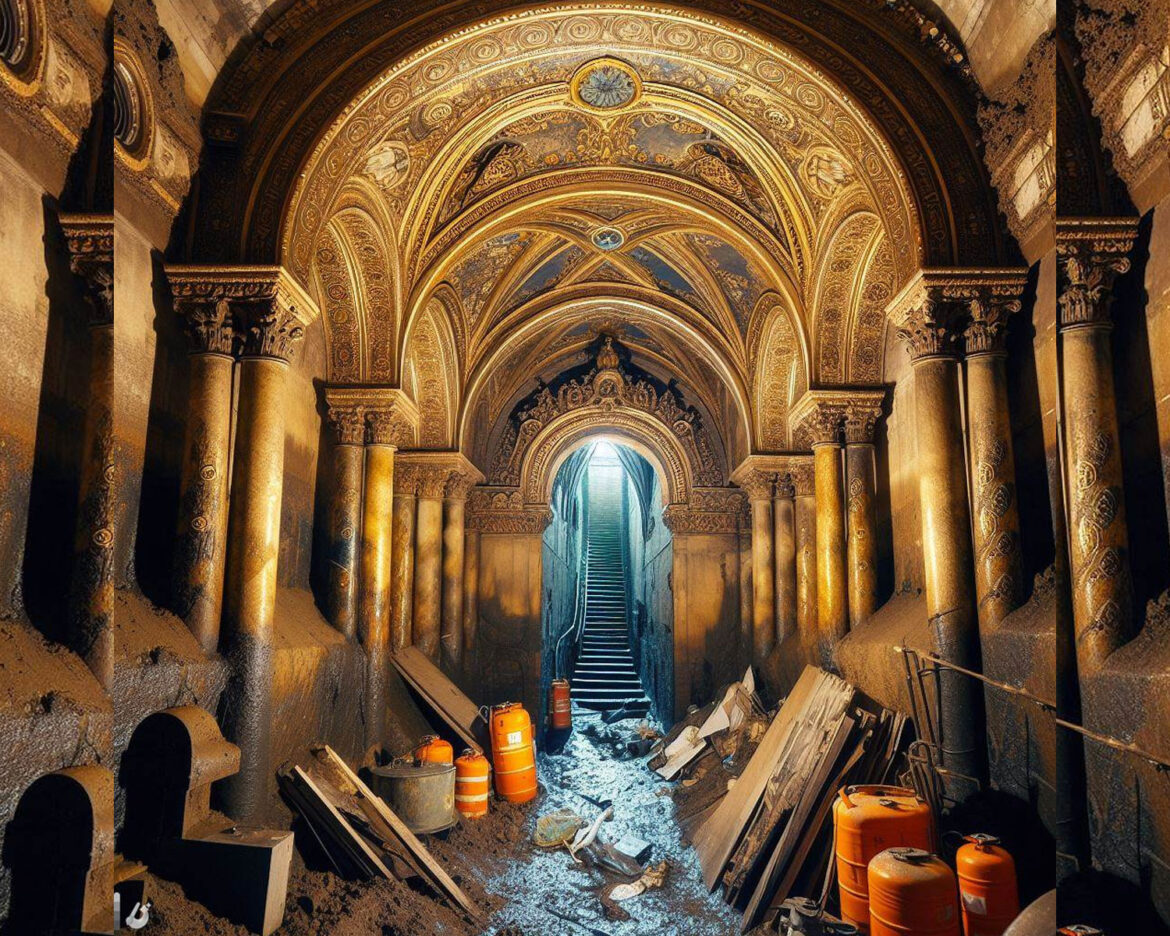Brooklyn, New York – In an unprecedented turn of events, the global headquarters of the Chabad-Lubavitch movement in Crown Heights, Brooklyn, became the epicenter of a heated dispute this week, resulting in arrests, building closures, and emergency stabilization orders.
The turmoil began with the discovery of a secret underground tunnel, allegedly constructed without official permission, leading to a violent clash between community members and law enforcement. The tunnel, measuring 60 feet in length and 8 feet in width, was found underneath the deeply revered synagogue, prompting concerns about potential structural damage.
Chabad spokesperson, Motti Seligson, condemned the tunnel as a “rogue act of vandalism” perpetrated by a group of young men. According to Seligson, the tunnel originated in the basement of an adjacent empty apartment building and connected to the synagogue through various offices and lecture halls. The spokesperson characterized the tunnel’s creation as an unauthorized and destructive act aimed at preserving access.
However, supporters of the tunnel argue that they were fulfilling an “expansion” plan envisioned by the late Rebbe Menachem Mendel Schneerson, the former head of the Chabad movement. Some community members expressed frustration with the overcrowded conditions in the basement synagogue and asserted that the tunnel project was initiated to connect the sanctuary with additional space.
The situation escalated on Monday when leaders attempted to seal the tunnel’s opening, resulting in a violent protest by tunnel supporters. The clash with police led to nine arrests on charges including criminal mischief, reckless endangerment, and obstructing governmental administration. Three others received summonses for disorderly conduct.

As the conflict unfolded, footage posted on social media showed a chaotic scene with onlookers, mostly young men, confronting NYPD officers. Wooden siding of the synagogue was ripped off, prayer books were scattered, and in response, officers deployed an irritating spray to disperse the crowd.
Emergency work orders were subsequently issued by the New York City Department of Buildings to stabilize the historic synagogue and nearby structures. The 60-foot-long tunnel, lacking city approval and permits, raised concerns about structural integrity, resulting in partial and full vacate orders for affected buildings. The illegal excavation work, inadequate shoring, and potential damage to adjacent structures prompted the department to cite the synagogue.
Despite the turmoil, some worshippers braved the rain to complete their prayers outside the closed-off synagogue. The community now faces the arduous task of reconciling differences and addressing the consequences of the underground tunnel dispute that has shaken the heart of this revered Hasidic Jewish movement.




